Basic Electrical Units
Methods for Producing Voltage
TEST YOUR KNOWLEDGE!
Before starting the chapter, let’s see how much you know!
Electromotive Force (EMF) and Potential Difference
If there is a surplus of electrons at one end of a conductor and a deficiency at the other end, a current flows. Certain devices create this difference in charge so current flows. These devices are sources of electromotive force.
EMF is defined as:
The energy transferred per unit when one type of energy is converted into electrical energy.
Potential difference is another term that is almost the same but has a subtle difference.
Potential difference is defined as:
The energy transferred per unit when electrical energy is converted into one other type of energy.
We will discuss this in more depth in a bit.
The six most common types of EMF are:
- Friction
- Chemical
- Pressure
- Heat
- Light
- Magnetism
Friction EMF
When two dissimilar materials are rubbed together, one material can transfer some of its electrons to the other.
This is the triboelectric effect, which is similar to what we discussed in the atomic structure chapter when electrons transfer, causing one object to become negatively charged (a surplus of electrons) and the other to become positively charged (a deficiency of electrons). This situation can result in an electrostatic discharge when the force of attraction becomes so great that the electrons are attracted to the positively charged object.
This attraction creates an arc most commonly seen in lightning. The clouds build up a charge as the water droplets move around. The charge is then attracted to the positively charged earth and ZAP!
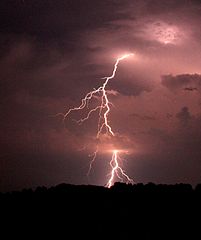
Of course, it is much more fun to put your cat in a box full of styrofoam chips and watch them stick.
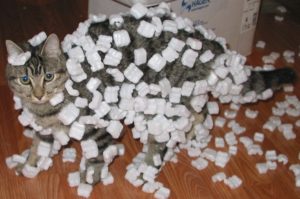
Chemical EMF
This is the principle upon which batteries work.
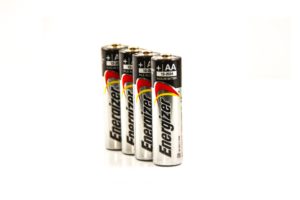
Without getting too deeply into the chemistry, basically, batteries work on the process of ionization.
What is an ion? It is a particle that has an electron added or removed (positive or negative).
In ionization, chemicals are added that have particles with a negative charge and particles with a positive charge. Metal plates that take on these charges are added. This allows a difference and creates an EMF.
Pressure EMF
This process is also known as piezoelectricity.
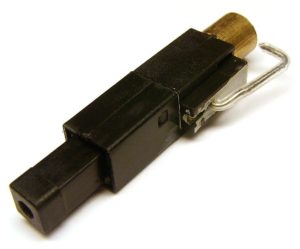
Piezoelectricity is the electric charge that accumulates in certain solid materials in response to applied mechanical stress. The word piezoelectricity means electricity resulting from pressure.
When pressure is applied to some objects, the pressure displaces the positive and negative charges in an otherwise neutral object.
The best-known application is the electric cigarette lighter: pressing the button causes a spring-loaded hammer to hit a piezoelectric crystal, producing a sufficiently high voltage electric current that flows across a small spark gap, thus heating and igniting the gas. The portable sparkers used to ignite gas stoves work the same way, and many types of gas burners now have built-in piezo-based ignition systems.
Another use is a microphone or guitar pickup. Sound hits the crystal and generates a voltage.
Heat EMF
This process is known as the thermoelectric effect.
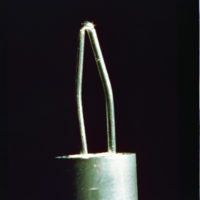
To summarize, when two dissimilar metals are at different temperatures and are touching, they produce an EMF.
This is because the electrons from the hot side (negative) want to jump to the cold side (positive).
A very common use of this principle is the thermocouple in your furnace
When the pilot light is lit, it generates a voltage on the thermocouple. This voltage allows a relay to switch on and allows gas to flow when the furnace calls for it. If the pilot light is out, there is no voltage. Therefore the relay won’t be on and the furnace can call for the gas but it won’t get it.
Light EMF
This is the photovoltaic effect. Photovoltaic cells (PV cells) are used as sources of EMF.
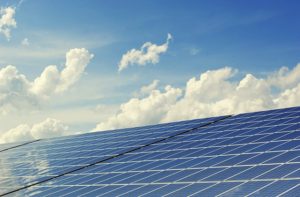
Photovoltaic cells are made of special materials called semiconductors, such as silicon, which is currently used most commonly.
How many valence electrons does a semiconductor have? Four.
An impurity is added to give a free electron.
Basically, when light strikes the cell, a certain portion of it is absorbed within the semiconductor material.
This means that the energy of the absorbed light is transferred to the semiconductor.
The energy knocks electrons loose, allowing them to flow freely.
We are seeing this technology used everywhere these days as it does not require fossil fuels to get energy.
Magnetism EMF
This is where most of our energy comes from. Magnets create lines of flux. When these lines of flux are cut by a conductor, an EMF is generated. Steam turbines, co-gen plants, windmills, and hydroelectric dams all use this technology.
Below is an example of a hydroelectric dam.
Image Hotspot
Click on the “+” to find out more.
All six of these sources of EMF achieve the same thing:
- Impart energy to the electrons.
- Push the electrons against an electrostatic field.
- Cause a surplus of electrons at one terminal of the source and a deficiency of electrons at the other terminal.
It is not unlike compressing a spring. The energy stored in the compressed spring can be used later to do work. The same is true of the separate charges: they store energy that can be later used to do work.
Video on Methods of Generating a Voltage
While this video may be a bit old, it is a fantastic explanation of the different methods of generating voltage.
Video!
Attributions
Electricity-Voltage video by PublicResourceOrg is under a Creative Commons Attribution License.

